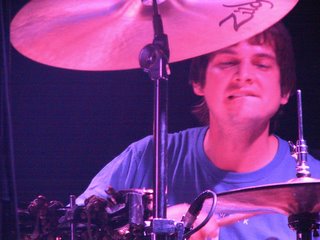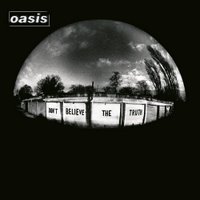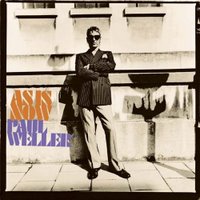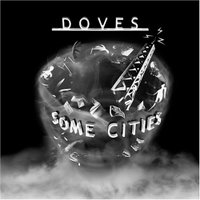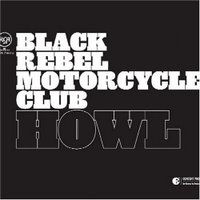
Greg Kot knows a thing or two about music. As rock critic for the
Chicago Tribune, Kot has made a good living writing about music. In 2004, Broadway Books published Kot's first book,
Wilco - Learning How To Die, a biography about the Chicago-based rock band Wilco, whose own story placed the problems of the music industry front and center. With his counterpart at the
Chicago Sun-Times, Kot and Jim DeRogatis have traveled into the realm of television and made their place on radio with "Sound Opinions." Recognized locally and nationally for his work in journalism, Kot remains the dedicated music fan you might find at a bar or club standing next to the jukebox.
On a quiet afternoon in December, with just two weeks left in 2005, Greg Kot shared his thoughts on music, journalism, and the new venture at Chicago Public Radio.
Chris Castaneda: 2005 is just a few days away from being wrapped up. Was there any particular artist that surprised you the most in the past year?
Greg Kot: Well, I’m a big fan of Tom Brousseau. I don’t know of too many people putting him on their Top 10 list, I’ll tell ya that. I think people kind of listen to it once and they dismiss it a little bit too easily, I suppose, if they listen to it at all. I think the guy’s kind of got something; a great voice, a voice unlike any I’ve heard in recent times, and just a really great knack for writing these beautiful, understated kind of songs—there’s actually one song on there that’s about silence, basically, having a quiet drink with somebody and having that silent moment with somebody. You don’t hear about stuff like that in pop songs anymore.
I’ve seen him perform a bunch of times. I really think every time I see him it feels like he’s a terrific songwriter whether anyone appreciates him or not. He’s writing great songs and he’s a terrific singer. And I’m not a huge fan of folky kind of singer/songwriter types; I think it can get kind of dull and predictable, but I really think he’s a cut above in terms of just the way he approaches the music.
CC: Who really made you simply cry or scratch your head in confusion?
GK: Boy, let me count the ways. The record that kind of surprised me that was a little overrated was the Sufjan Stevens record. I just thought that was a very underwhelming record. I’ve heard a lot of good orchestral-pop kind of indie rock records. To my mind, a guy like Sufjan doesn’t hold a candle to some of the best Elephant Six that came out a couple of years ago. Stuff like that just doesn’t impress me as much as it should because I’ve heard enough of it that I know when that stuff is really done well. I didn’t think it was a terrible record by any stretch, but I just thought it was incredibly overrated for what he bit off there—there were some really nice moments on that record.
CC: Was it almost like a novelty record to you?
GK: I wouldn’t even say a novelty. I just think it was a blah record. I’ve got tons of records in my collection that are in the same pocket that are way better. I was kind of mystified by the attention that was given to that record.
CC: Who would you like to have put out an album in 2005 but didn't?
GK: That's a good question. I was just thinking about Mudhoney the other day and how much I liked their last record. It's been a while. I guess they have a new one in the pipeline. So, I think a new record is going to come out. I was really glad to see Mudhoney come back a few years ago. They played a great show at the Abbey Pub. They sounded really rejuvenated in their second incarnation.
I'm waiting for Wilco to knock out some new studio stuff. I think they're overdue for a new studio record. I’m still waiting for My Bloody Valentine’s next record. I’ll probably wait until I’m dead.
CC: I’m still sitting with
Loveless after owning it for over a year. It just hasn’t hit me yet.
GK: Wow. That’s amazing, Chris. Maybe you need to take more drugs.
CC: I've got enough (laughs). But's let's talk about our very field of music journalism. You try and listen to all the music you can. You also try and read as much as you can in order to keep up with what's happening in music. How would you describe the current state of music journalism, both print and online?
GK: I’m a big fan of writing, just good writing. We’re living in a time when there’s more writing than ever about music. I think I’ve seen less good writing than ever about music at the same time. More people are practicing it but fewer people have anything really original to say about it or can say it in a way that makes me want to read about something I may only have passing interest in. I find that most of the reviews that I read are so poorly written that it’s not even worth it to me to investigate further. One of the things that I most enjoy about music criticism was the excitement it gave me about wanting to hear something; the writing was so good that in some ways the record had a hard time living up to the writing.
While I enjoy a lot of what’s in
Pitchfork, I think those guys do a great job of building their empire from basically the grassroots into something that’s really a taste maker, I found most of the writing on that website very difficult to read and not very good. They’ve got so much stuff to write about and so many writers. In some ways, they might be better served by sort of narrowing their focus a little bit and focusing on a few writers that are really talented rather than spreading themselves so thin. I’m singling out
Pitchfork only because they’ve done better than most.
There’s a lack of really strong critical perspective. There’s a lot of consumer guides out there, but the deeper, explanatory pieces—the stuff that sort of gets under the skin of a record or a movement in music—I’m not finding out there. Maybe it’s either a lack of time or money or space, but the analytical chops just don’t seem to be there. I’m kind of disappointed that there aren’t more young writers out there who are developing those kinds of chops and making me really sit up and take notice of what they’re doing and the kind of perspective they’re bringing to music, in turn, really opening new worlds for listeners.
I really think music writing should be a process of educating yourself about music and in turn educating the listener on how to listen to music. That’s not an academic exercise by any stretch. I’m making it sound a lot less fun then it should be, but it should be fun. It’s like unlocking a door for a listener and saying, “Here’s this really cool piece of music, and here’s how I listened to it and why I got excited about it.” I’m not really seeing that as much, especially with the Internet where you would think the amount of space is unlimited; you could really go into depth on some things. I’m not really seeing it exploited that way. Maybe in a sort of back handed way it’s questioning the intelligence of the audience saying the audience doesn’t want to read a 5,000 word pieces on why the M.I.A. album is important or why it isn’t important. I would be equally interested in reading both of those pieces. I want to see more stuff along those lines.

CC: File sharing has been a thorn in the music industry's side for years. They just seem to be now coming to terms that consumers like having options when it comes to buying their music. But what about file sharing and music journalism? Through file sharing, people can basically eliminate the critic and album review. Do rock critics lose their audience because of file sharing?
GK: With bloggers and mp3 blogs, it’s a lot easier to access music and for consumers to make up their own minds about what they like or don’t like. I think that’s fantastic. The whole idea of democratizing the process is a real plus; the idea that there’s more music and more writing about music are all good trends. But I think things will eventually shake down a little bit, too. We’ve got all these amazing new tools, and we’re still figuring out to use them, how to effectively use them in a way where it’s more than just this piling on of information. It’s almost like we’re overwhelmed by this stuff; there’s so much of it out there, and whose voice do you really trust?
At the end of the day, there’s going to be taste makers and there’s going to be people who want to hear what the taste makers have to say about it. I think we’re still figuring out how that new process is going to work. The distribution model has changed radically, not just for music itself but also for how we talk about music, how we discuss it as an art form, and how we critique it. All of that stuff is in flux right now.
People who provide the best content and are the most insightful about that content are going to be the ones people keep gravitating towards. Right now it’s unclear as to how that will shake out. So, it’s an exciting time from that standpoint. I think it’s a time where young, ambitious people—both music makers and music writers—can make a mark because the ground rules are still being established.
CC: Before teaming up with Jim DeRogatis (
Chicago Sun-Times) on "Sound Opinions," you had "Rock Tonight" on WLUP-FM (The Loop) in the mid-90's with Michael Harris, former editor of the
Illinois Entertainer. Though you would never consider yourself a radio DJ, what types of DJs would you say have been inspirations to you in the radio world?
GK: The DJs that I admired are people like Johnny Mars and Marty Lennartz who played really cool music late night on WXRT. The most important thing for me was I wanted a DJ to surprise me; play me something I don’t know yet and turn me on to something really cool.
We try to play stuff that isn’t going to be as predictable or stuff that people maybe haven’t heard. I still remember playing Black Sabbath on the second or third “Sound Opinions.” I don’t think Black Sabbath had ever been played on XRT. It was a really proud moment for us.
CC: After seven years, "Sound Opinions" parted ways with WXRT (93.1 FM) in November to make a new home at Chicago Public Radio-WBEZ (91.5 FM). How's life under the new roof at Navy Pier?
GK: Well, I think the facility is amazing. It’s going to allow us to do some things with bands and musicians that we weren’t able to do at XRT. Being able to record John Cale properly and have him psyched about doing it was great...the ability to reach an audience by different means, not a traditional radio show playing at one time a week at a certain time slot, you’ve got the streaming, you’ve got the podcasting, and you’ve got the archiving. So, people can access the show in many different ways, at many different times. I think that’s the way you have to treat all media these days. You have to serve the audience in a way they want to be served. You can’t say, “Well, this is the only way you can have this thing.” Similar to the music industry trying to sell consumers only the $15 version of the CD instead of realizing they may want the single or the mp3 download.
The fact that WBEZ believed in the show enough that they want to syndicate it, they want to take it to other markets around the country…the fact that they’ve been successful with other shows like “This American Life” and “Wait, Wait…Don’t Tell Me!” kind of indicated to me that Torey Malatia is the guy to do that. When he says he wants to do that you tend to give him a little bit more credibility than maybe with any other programmer in town because he’s one of the few, maybe the only guy, that’s really succeeded in doing that on a nationwide level, taking Chicago based shows and turning them into nationwide phenomena. The fact that there aren’t more “Sound Opinions” out there is really surprising to me. I’m glad we have the opportunity to do this show and maybe take it to a national level. That’s a real possibility at WBEZ whereas I don’t think it was at WXRT.
CC: You've been doing radio now for close to ten years. Are there still challenges you face with "Sound Opinions" even after all the experienced you've logged over those years?
GK: It still feels new, and it still feels like you’re learning things. It’s the same way I feel about my writing. If I felt like I knew it all and I was done learning, then I would feel like I would need to move on and do something else. I certainly don’t feel that way about radio. The more I do it the more I realize how much I don’t know. The learning process is fun.
I’ve got a guy (DeRogatis) across from me that in so many ways we’re such complete opposites in terms of temperament and taste. Yet, we’re still able to get along outside the studio. It’s a pretty rare thing. The essence of the show is you’ve got two guys butting heads about things a lot and having different viewpoints. Even when we agree we agree in different ways about something.
Why aren’t there more shows like this around the country? Part of the problem is that you need to find two individuals who sort of complement each other and have a chemistry. The more I work with Jim the more I realize that’s a rare thing. You can never take that for granted. As long as that’s there, the possibilities for the show are pretty limitless.
CC: What will you miss about being at WXRT?
GK: XRT gave us a shot. They were our first choice when we started looking for a radio station in 1998 to actually do this show after Jim got back in town from Minneapolis. He called me and said, “Let’s do this radio show, and let’s do it right.” We both sort of hit on XRT as the right place for this show even though XRT had never done talk radio before. They didn’t even have a phone line to take a phone call from a listener. We just felt that their sensibility and their sense of openness to something like this would be much greater than some of the other stations in town, and it would be the best home because of the audience—the intelligence of the audience and the wide variety of music that the audience had been exposed to. It wasn’t like we would be talking to a crowd that only listened to alternative rock, only listened to hip hop.
I have to give Norm (Winer) a lot of credit. He took a huge risk in putting us on the air; it wasn’t like this was a standard fare for him, giving us two hours of basically unsupervised airtime every week for seven years since January ’99. That’s an amazing thing! I have to tip my hat to the guy and say thanks for the opportunity. The only reason we left was we thought there was an even greater opportunity in moving to WBEZ and the exposure that the show would be given.
I give XRT a lot of credit for giving us the forum and for helping us develop the show. I don’t think we would have gotten the WBEZ deal if we hadn’t developed the show to the point where it was and what it was--XRT was a great home for it.
CC: The new format for the show is now just an hour. Is there still as much freedom as there was when the show was two hours on WXRT? How do you feel about the hour show?
GK: I like it because it’s faster paced. At the same time, we want to give it some more breathing room so that the exchanges, which are the essence of the show, can have some of that breathing room; we can go off on a tangent occasionally, which some people really loved about the XRT show. We still want to have those exchanges and those frivolous moments where it was about the personalities and the chemistry as much as it was about the content.
On one hand, I liked what we had. I liked the two hours of sort of freewheelin’ discussion on XRT. It’s now one hour, and it’s going to be less freewheelin'. I love the idea of figuring out how to make that great. It’s an exciting challenge, and I’m excited about the challenge. I really think we needed the challenge because we’ve been doing for seven years. We needed a fresh goal, a fresh sense of purpose about the show, and this is really giving it to us. In some ways, with the XRT show, we could have almost rolled out of bed and done that show. We just felt so comfortable in that format, but there’s sort of a mistake in being too comfortable. It’s good to feel a little bit weird and out of sorts.
*Chris Castaneda was a research assistant for Greg Kot’s Wilco: Learning How To Die and Jim DeRogatis’ upcoming book Starring At Sound: The True Story Of Oklahoma’s Fabulous Flaming Lips. He is also a moderator for the "Sound Opinions" message board*
All Photos By: Chris Castaneda (Taken At The Hideout, 6-17-2004)
 Lin Brehmer, veteran DJ of WXRT, stood at the microphone like a pillar of musical integrity before a sold-out audience at Metro. "Right now, awards are being handed out for the worst music America has to offer," said Brehmer sternly. What he was referring to was the 48th annual Grammy Awards that was currently underway out in Los Angeles, CA, the music industry's big night out. It was clear from the volume of cheers that the audience knew exactly what Brehmer was talking about. "Here's the best rock 'n' roll America has to offer," said Brehmer about the band about to take the stage. That band was Black Rebel Motorcycle Club.
Lin Brehmer, veteran DJ of WXRT, stood at the microphone like a pillar of musical integrity before a sold-out audience at Metro. "Right now, awards are being handed out for the worst music America has to offer," said Brehmer sternly. What he was referring to was the 48th annual Grammy Awards that was currently underway out in Los Angeles, CA, the music industry's big night out. It was clear from the volume of cheers that the audience knew exactly what Brehmer was talking about. "Here's the best rock 'n' roll America has to offer," said Brehmer about the band about to take the stage. That band was Black Rebel Motorcycle Club. Making it evident that B.R.M.C. is a changed band, the set's first four songs came from Howl. There was a cryptic mood in the room as "Restless Sinner" opened the night; the stage lights were barely raised to a level that would make the band members completely visible. The hymn-like song cried in the shadows of Metro, uncovering a well of soul that was always there within the band but went unnoticed beneath the chainsaw frenzy of guitars. The band balanced a strong mix of new and old favorites making their stage presentation a much more full experience. The stomp of "Ain't No Easy Way" in all of it's Led Zeppelin-esque glory steamrolled with Hayes blowing away on harmonica; "Love Burns" prowled like a stalker; "Promise" tapped into the essence of Sam Cooke's blend of gospel with the same passion they put into their trademark anthem "Whatever Happened To My Rock 'N' Roll (Punk Song)."
Making it evident that B.R.M.C. is a changed band, the set's first four songs came from Howl. There was a cryptic mood in the room as "Restless Sinner" opened the night; the stage lights were barely raised to a level that would make the band members completely visible. The hymn-like song cried in the shadows of Metro, uncovering a well of soul that was always there within the band but went unnoticed beneath the chainsaw frenzy of guitars. The band balanced a strong mix of new and old favorites making their stage presentation a much more full experience. The stomp of "Ain't No Easy Way" in all of it's Led Zeppelin-esque glory steamrolled with Hayes blowing away on harmonica; "Love Burns" prowled like a stalker; "Promise" tapped into the essence of Sam Cooke's blend of gospel with the same passion they put into their trademark anthem "Whatever Happened To My Rock 'N' Roll (Punk Song)."
